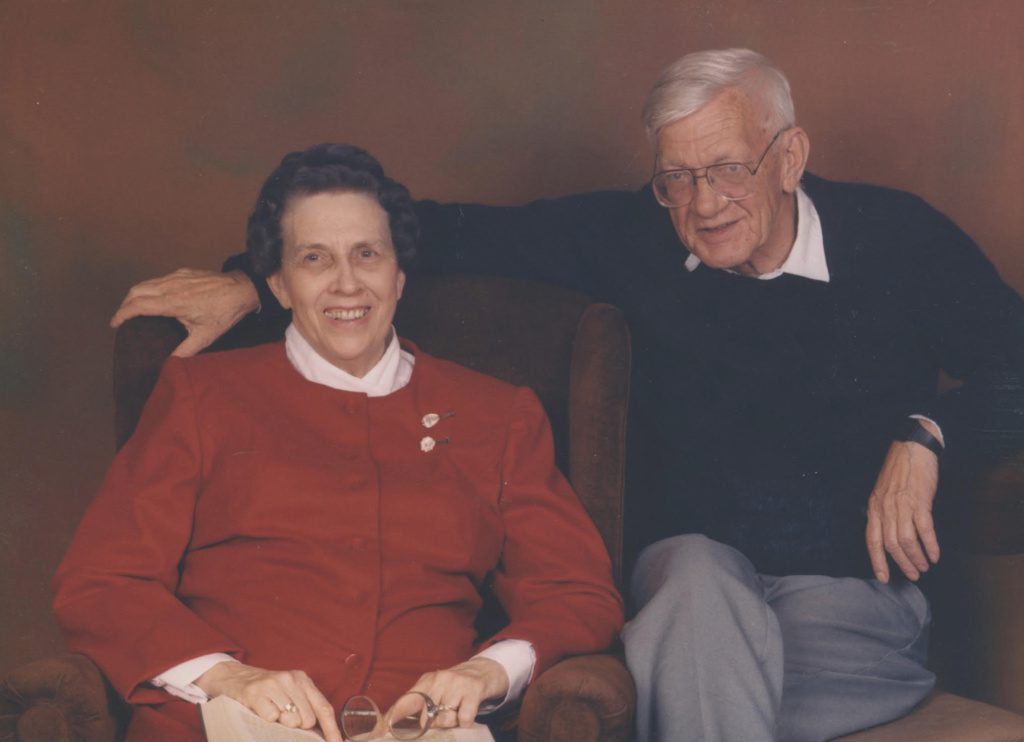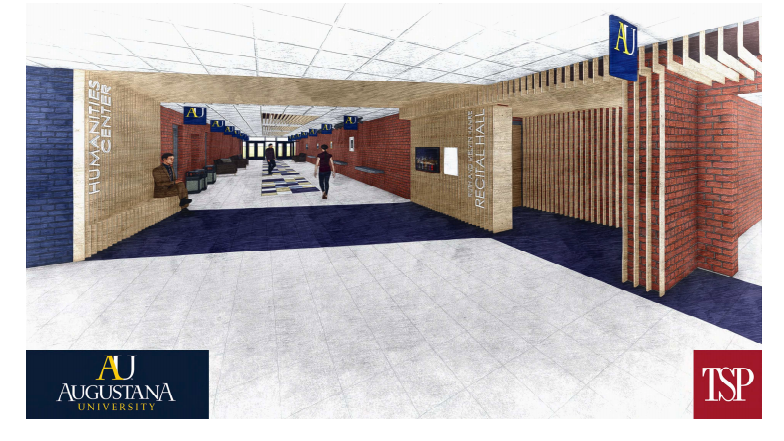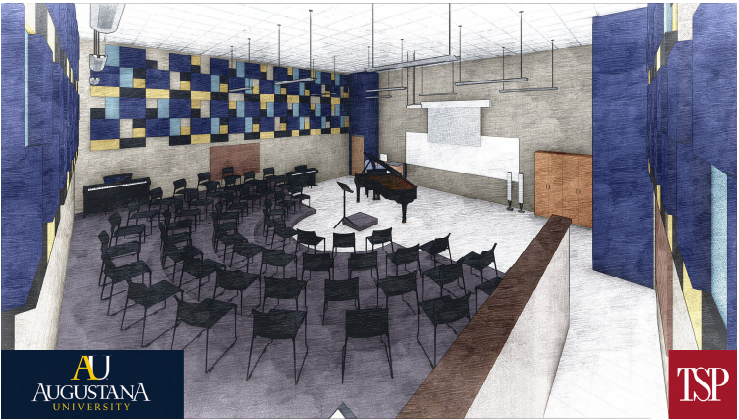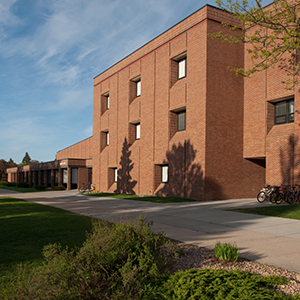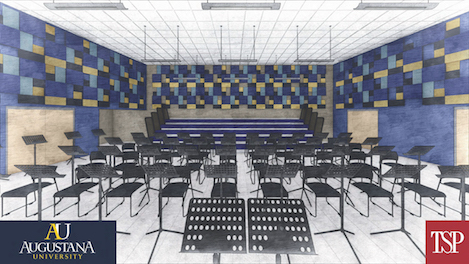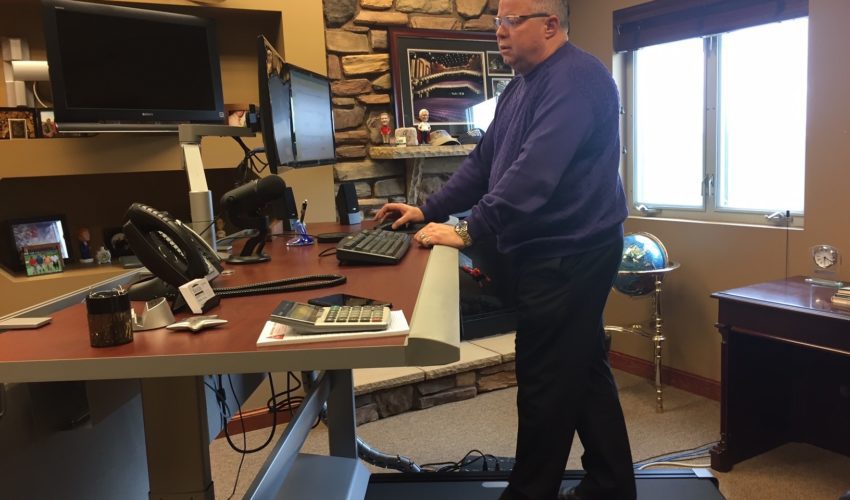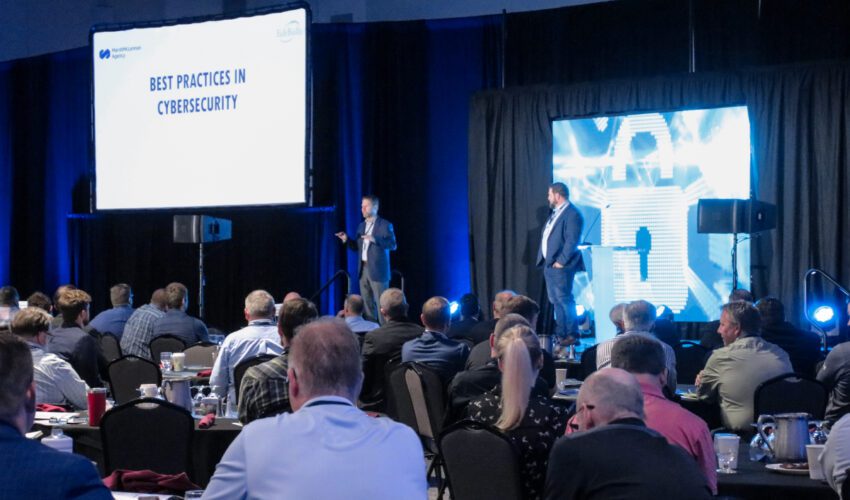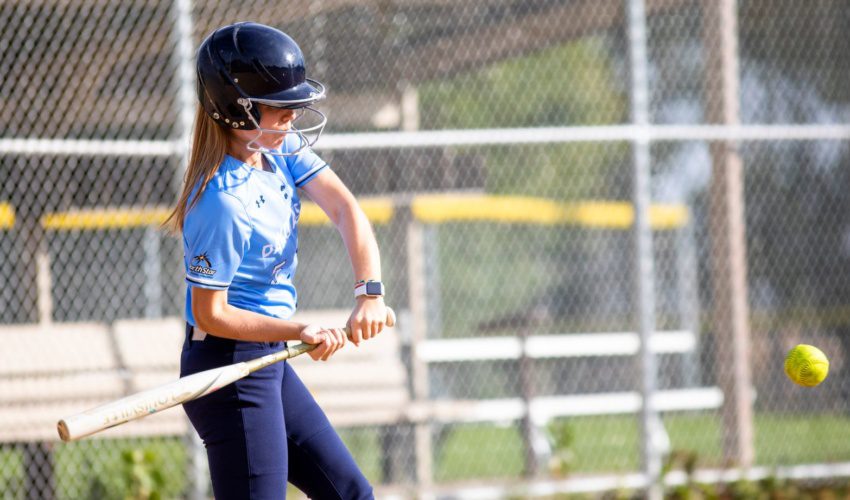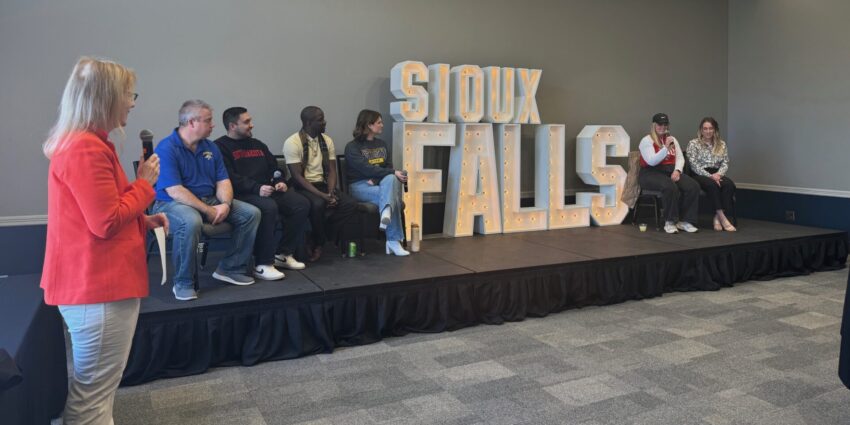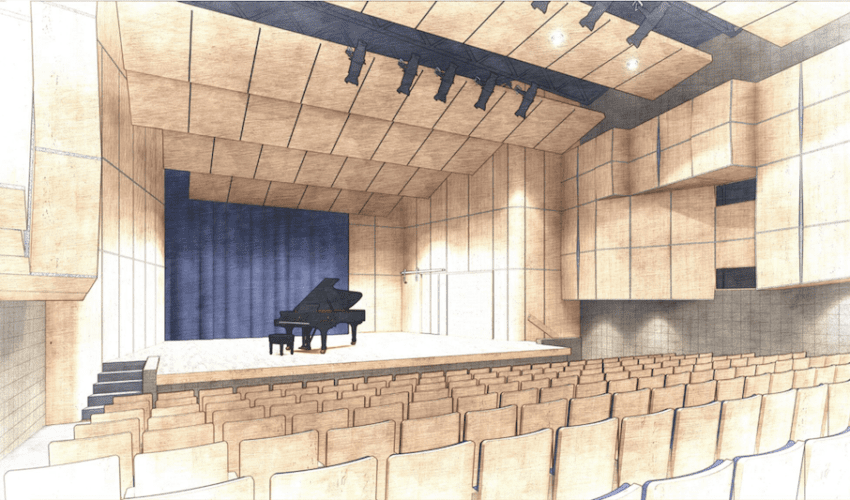Augustana’s improved humanities space strikes right tone for liberal arts education
Aug. 1, 2018
This paid piece is sponsored by Augustana University.
Brad Heegel remembers a professor once telling him in college that “a liberal arts education can take place under a tree.”
The building “isn’t as important as the learning and the people spurring you on,” said Heegel, director of performing and visual arts development at Augustana University.
Where students learn, practice and perform, though, does make a difference.
And now, Augustana students will soon enjoy a refreshed humanities building that matches the level of learning that occurs inside it.
The Humanities Center, which dates back to the early 1970s and is located in the heart of campus near 30th Street and Grange Avenue, is in the midst of a $3 million upgrade.
It will be renamed the Fryxell Humanities Center in honor of longtime Augustana professors Don and Lucy Fryxell. Don Fryxell was a former English department and humanities chair and central in the planning and design of the new building. Lucy Fryxell was a beloved professor who taught under six presidents at Augustana and served nine years on the Board of Regents after her retirement.
When students return to campus this fall, they will find refreshed classrooms to match the interactive learning that Augustana embraces.
“We all went to school with an instructor at the front and rows of desks, and now we have spaces defined for small groups and interactive learning,” said Pam Homan, vice president for advancement.
“The changes within the classroom spaces better facilitate student and faculty interaction and experiential learning, taking the text off the page.”
Construction also is underway to renovate the newly renamed Hamre Recital Hall with new seating and lighting, acoustics, projection and recording capabilities as well as improved practice rooms that include 24-hour secure access.
“Musicians spend a significant amount of time in practice and rehearsal rooms, so we have to enhance that environment for those kids to feel comfortable and safe and provide them the best equipment possible,” Heegel said.
Another gift created the Pederson/Homan Music Studio, which opened last academic year and offers a modern space for studios to be inspired, release their creativity and produce works of art using workstations with keyboards, iPads and computers.
“It’s a marvelous gift and has created a composition lab with the best computers for thousands of miles,” Heegel said. “We are already witnessing remarkable creativity as a result of this space.”
Personal design approach
The lead architect on the project couldn’t be a better fit.
TSP’s Chase Kramer is an Augustana graduate who’s also a pianist. His history with the formerly named Kresge Recital Hall, though, goes back to piano lessons he took there in third grade.
He recalls stumbling and tripping on the stairs at a recital, while his brother and a friend snickered in the crowd.
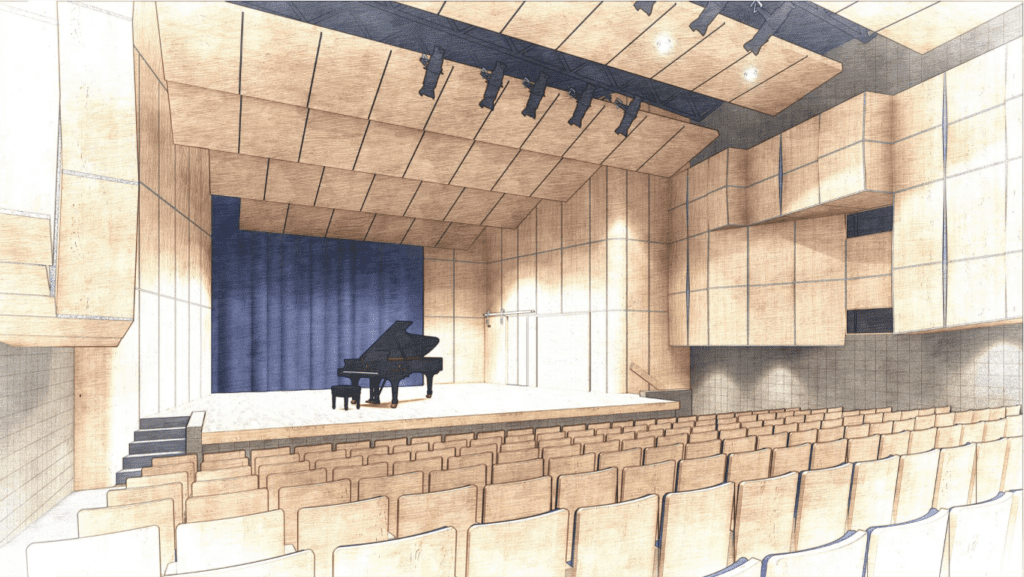
Rendering by TSP
“Working on this project, now with an architectural background, I realize now that the steps were designed under a previous generation of building code, so the standard rise and run doesn’t match what is experienced in conventional commercial construction – this, at least, is what I attribute my stumbling at the recital to, not any sort of adolescent awkwardness or anything,” he said.
In college, while he wasn’t a music major, he spent countless hours in the humanities building “jamming out on the piano” and taking classical piano lessons. His instructor required he play for juries, putting him back on stage again, and he used the space for Viking Varieties rehearsals and even as recently as last year as part of the South Dakota Symphony Chorus.
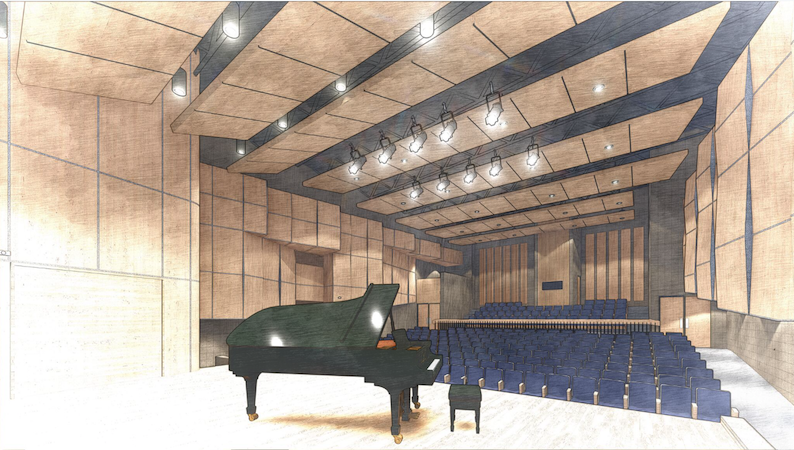
Rendering by TSP
“All these experiences gave me a unique understanding in the space as both a vocal and instrumental performer, as well as an audience member. I knew it was important to keep the space flexible but also should be prioritized for its highest and best use – music. This was something echoed early on by faculty comments as well,” Kramer said.
In working through the design with Augustana, Kramer and TSP helped create a clean, contemporary look while going through a wish list of updates to come up with an approach that came in right on budget.
“It’s great to come back and work on a project for your alma mater,” he said. “We wanted to bring in wood tones but also help the space be part of the university’s brand identity, so there are the requisite blue tones one might expect but no golds. All the original concrete block walls will be clad with a wood-look veneer paneling to really bring the sophistication of the space up to a university level.”
Consultants helped with acoustics, rigging and AV, he said, and items such as pianos, lights and backdrops will be able to move easily.
“The space is going to have state-of-the-art technology, and some other really nice tricks that will help with the flexibility and functionality,” Kramer said.
Humanities education leads to many careers
Every Augustana student takes liberal arts classes in the humanities building.
“Those are core to creative problem-solving and understanding a broader context,” Homan said. “It’s the heartbeat of the liberal arts.”
But, parents, if your student chooses a major in the Fryxell Humanities Center, there are plenty of career paths out of it too.
“If you can read and write and speak and apply critical thinking, you can do anything you want to do,” Heegel said. “You look at the job market, and it changes every day. The skills you might be trained for now might not be needed in five years. This is why a liberal arts education is so valuable.”
Assistant director of admission Wade Gemar tells parents and students of his own experience while at Augustana. As a student, one of the last courses he took was on Buddhism and Hinduism in the religion department.
“I knew I’d learned something I’d never learned before. It ended up being my favorite class,” he said.
“And my first job after Augie was at the Center for New Americans through LSS. And that class impacted my daily professional life because more than 50 percent of the families I worked with practiced Hinduism. That’s the beauty of the liberal arts. They teach adaptability and the ability to think.”
Music majors also go on to varied careers, he said.
“We have music majors who go to medical school or end up running arts organizations, and performing and visual arts programs. Many are teachers,” Gemar said. “You can take a music major and go into business or education. There are so many directions you can go. I always tell families as long as you’re passionate about what you’re studying, that’s what people are looking for.”
Many who aren’t majoring in the field also will benefit from Augustana’s improved facility. Eighty percent of those in choir or band aren’t music majors.
“We’ve got more singing future doctors and lawyers and bankers, and they’re looking for a place to continue to play their instrument,” Heegel said.
“Humanities enhance your life in all different ways beyond the courses that will be taught here. For our students and for the larger community, being exposed to great music or theater or beautiful art changes you in a powerful way.”

